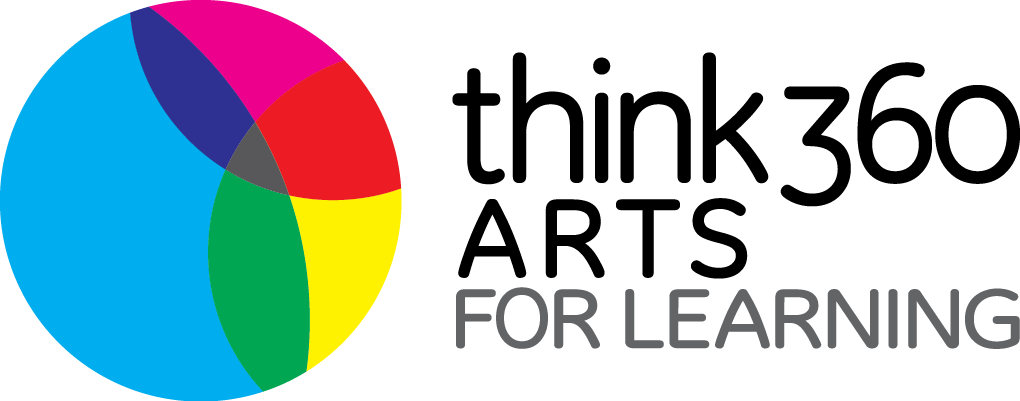
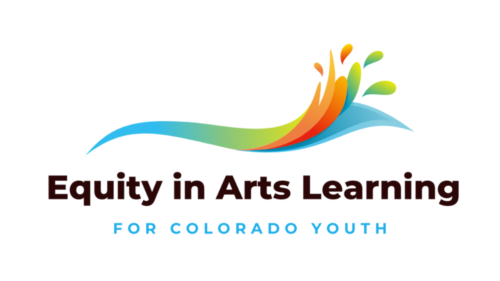
Funding Opportunity
Equity in Arts Learning for Colorado Youth (EAL) seeks to increase access to arts education for historically marginalized youth. Grants of $10,000-$25,000 are available to support projects that bring professional artists and culture bearers into educational settings to lead programming with youth ages 4-21. Projects supported by EAL will exemplify the value of arts education, encouraging ongoing community support.
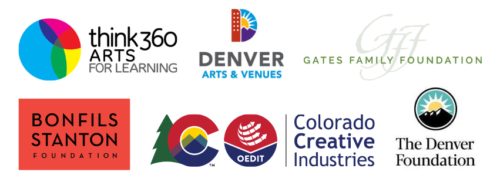
Goals of this Initiative:
The Bonfils-Stanton Foundation, Denver Arts and Venues, the Gates Family Foundation, Colorado Creative Industries, and The Denver Foundation have partnered with Think 360 Arts to realize a nearly half-million dollar fund. The goal of the initiative is to dismantle the systemic barriers that have long prevented marginalized youth from experiencing the life-altering benefits of arts learning. Specifically:
- Strengthen regional efforts to improve sustained access to arts education for historically marginalized and minoritized youth (including youth who identify as BIPOC (Black, Indigenous, People of Color), LGBTQIA+ (Lesbian, Gay, Bisexual, Transgender, Queer/Questioning, Intersex, and Asexual), a person with a disability, and/or living in a rural community).
- Provide opportunities for youth ages 4-21 to work with professional artists in an educational setting, especially youth who have limited or no access to high quality, sustained arts learning.
- Heighten awareness of the impact of arts education, so that resources both financial and curricular increase state-wide, leading to more equitable access to arts education for youth.
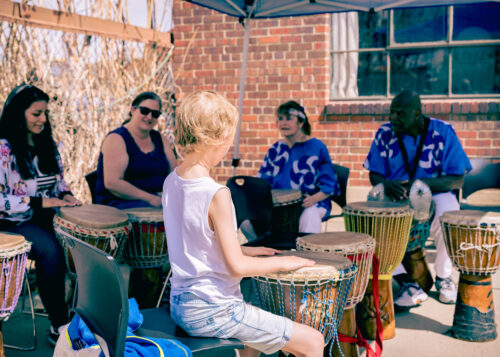
If you submitted a Letter of Intent and have not received a notification, please check your spam folder or reach out to grants@think360arts.org.
2024-2025 Equity in Arts Learning for Colorado Youth – Grant Application
Application Timeline
- Letters of Intent accepted September 28, 2023 – December 1, 2023
- Invitations to Apply – Sent by January 19, 2024
- Full Application Due – February 23, 2024
- Award Notifications – Mid-April, 2024
- Projects Take Place – July 1, 2024 – June 30, 2025
- Final Report Due -Thirty days after completion of project, and no later than July 31, 2025
Applicant Qualifications
Applicant must be a Colorado-based nonprofit organization, or a PK-12 school.
- School applicants must engage an artist or arts organization as a partner.
- Organizational applicants must:
- Be engaged with a school partner or have a strong history of working with youth
- Be registered with Colorado Secretary of State with an address in Colorado
- Have a Colorado-based staff person who will be actively engaged in the project
Funded projects may take place at schools (during the school day or after school), community centers, libraries, nonprofit arts sites, and other locations that are highly accessible to youth.
Project Design
Projects may involve any arts & culture discipline or genre, such as theater, dance, music, visual arts, media arts, literary arts, folk and traditional arts, or interdisciplinary art forms. Arts integration projects (connecting an art form with another subject area) are encouraged. Projects should:
- Take place over a period of time that allows for depth of learning and relationship building. Ideally, projects take place over the course of six weeks or longer.
- Center the identities and needs of youth. Youth should be consulted in the project’s design and be able to influence the project’s evolution along the way.
- Fill a clear gap in the school or community. The rationale for the project should be informed by the stated needs of the student and community.
- Engage experienced artists and culture bearers. Teaching artists should have a successful record of working with youth, and whose identities reflect the youth participants.
- Be highly accessible to youth participants. A fee may not be charged for participation, and it must take place in a setting that youth are able to easily get to.
- Allow for time and resources to measure and communicate the project’s value and impact. Evaluation results will be collectively shared.
Examples of Projects
The following ARE eligible for EAL funding:
- An artist residency in which students create a mural reflecting their school culture.
- A visiting musician works with youth at a local community center to create songs expressing their cultural identities.
- A media artist supports youth in creating a podcast featuring interviews with community elders.
- Youth write and produce a one-act play with guidance from a theater teaching artist using vignettes from their daily lives.
The following NOT eligible for EAL funding:
- Programs that charge a fee to participants
- PreK-12 Teacher salaries (Teacher stipends are allowable)
- General operating costs not directly related to the project
- Capital improvement projects
Click HERE to download the English PDF version of the EAL Guidelines
Click HERE to download the Spanish PDF version of the EAL Guidelines
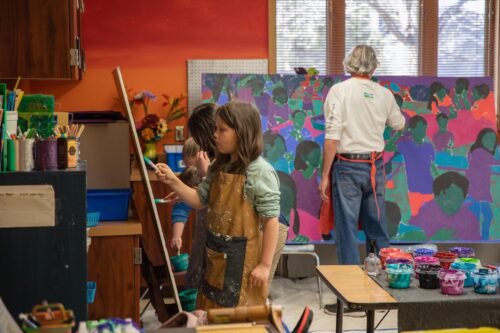
Resources:
Virtual Info Session
Watch the recording of our Virtual Info Session and Q&A to learn more about this funding opportunity and the application process, timeline, and requirements.
FAQs
Can individual artists apply for this grant?
No, individual artists are not eligible to apply for this grant. Individual artists are encouraged to partner with schools or nonprofit organizations as the artistic partners, with the school or nonprofit being the formal applicant.
Do you accept Fiscal Sponsorship for projects?
Not presently. We may re-evaluate in future years.
What Teacher Stipends are allowable?
While K-12 teacher salaries are not allowable as it is a duplication of public funds, extra duty stipends for time spent outside of contract hours may be included in the budget.
Can I apply for this grant to pay for staff salaries at a nonprofit organization?
We understand that for many arts nonprofits, the majority of the project costs will apply toward the direct implementation of the project, which will likely include artist and administrator time. Personnel expenses included in EAL projects must be directly associated with the delivery of the program.
Can this grant go toward hiring a new staff member?
As grantees will vary from year to year, we would discourage nonprofit organizations from applying to EAL to fund new hires. However, it is not a disqualification.
As an applicant, why do I have to have a staff member in Colorado in order to apply?
Staff presence in Colorado is important to us, as it shows a level of investment and authentic commitment to and understanding of our arts community. Proposals that engage Colorado artists are a top priority of this initiative.
Can I request less than $10,000?
We encourage you to build a budget that includes artist fees, supplies, transportation, marketing costs, and staff time, if applicable. If you have considered these costs and the project is less than $10,000, yes you may apply for an award less than $10,000. An amount requested below $10,000 might also reflect an opportunity to expand an existing program that has some funding in place.
Can I request funding for a program that already exists?
Yes, this does not need to be a new project.
Am I eligible to apply if I already receive funding from one of the funding partners?
Yes, as long as you can demonstrate the need for additional resources for the project proposal.
Can EAL programs serve college students, since the ages listed are 4-21 years old?
Youth enrolled in Colorado PK-12 schools can be as old as 21, including, but not limited to, those in 18-21 programs and alternative pathway schools. EAL projects are not intended to support programming at the higher education level.
Examples of Past Projects*
Example 1
A school worked with a dance-based nonprofit organization on a collaborative program that integrates movement exercises into curriculum to reinforce classroom topics through a unique customized artists-in-residence program. This program was offered in both English and Spanish and centered around the theme Heroes In Our History - Héroes en nuestra historia. With a focus on historical figures in Mexican and Hispanic history, all third grade students learned the dances, songs, and traditions that correspond to milestones in history during epic time periods. In addition, they also learned about how other countries and cultures influenced this artistic and cultural expression, resulting in a mixture (mestizaje) of multiple styles with strong, indigenous and Spanish undertones. The program ended with a culminating student body performance that was open to parents, families, and the community.
Example 2
Local artists worked with high school students from Yuma and Washington Counties on a multi-media creative place-making project that involved oral histories, artifacts, photography, sculpture and upcycling to create a cross-cultural, inter-generational exhibit connecting the communities’ past to ideas for its future. Students learned basic ethnographic interviewing skills in order to interview an elder about their past, their migration to or growing up in NE Colorado, and their hopes for the future of the high plains’ communities. Students collected photographs of their interviewee along with a photo of an artifact that the interviewee finds meaningful. During a retreat with professional artists, students designed and constructed “story bird houses'' that contained audio files.
Example 3
9th grade visual arts students at a new arts-integration school co-created a permanent mural alongside a local Latinx artist. Students engaged in workshops with the artist on topics including color theory, drawing, and painting, along with learning about the artist's "Abstract Imaginism" philosophy. The project embraced students’ vision and creativity, resulting in a work of art that reflects the energy, character, and culture of each individual student.
Example 4
A school partnered with a nonprofit arts and restorative justice organization to support meaningful repair and restoration of relationships between the school and 20 students who were involved in school fights and were suspended. The program addressed the youth’s need for social-emotional growth and wellbeing as they faced the deconstruction of identity and isolation created by the youth legal system. The school aimed to uplift participants in their journey of restoration and healing, to co-create opportunities for participants to experience belonging within a community. The curriculum was designed for participants to reclaim their voice, their story, and their power. The school also engaged the organization to offer professional development for their staff in restorative justice practices through theater.
*Past projects were completed as part of the annual Colorado Arts Partnership (CAP) Grant Program, which was a similar grant program that took place for over 10 years. The CAP Grant program criteria is very similar to EAL criteria, and all above projects would be eligible for EAL funding.
For additional questions and assistance, please email grants@think360arts.org
